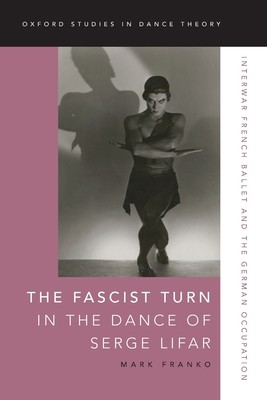
- We will send in 10–14 business days.
- Author: Mark Franko
- Publisher: Oxford University Press, USA
- ISBN-10: 0197503330
- ISBN-13: 9780197503331
- Format: 15.2 x 23.1 x 1.8 cm, softcover
- Language: English
- SAVE -10% with code: EXTRA
Reviews
Description
Ukrainian dancer and choreographer Serge Lifar (1905-86) is recognized both as the modernizer of French ballet in the twentieth century and as the keeper of the flame of the classical tradition upon which the glory of French ballet was founded. Having migrated to France from Russia in 1923 to join Diaghilev's Ballets Russes, Lifar was appointed star dancer and ballet director at the Paris Opéra in 1930. Despite being rather unpopular with the French press at the start of his appointment, Lifar came to dominate the Parisian dance scene-through his publications as well as his dancing and choreography-until the end of the Second World War, reaching the height of his fame under the German occupation of Paris (1940-44). Rumors of his collaborationism having remained inconclusive throughout the postwar era, Lifar retired in 1958. This book not only reassesses Lifar's career, both aesthetically and politically, but also provides a broader reevaluation of the situation of
dance-specifically balletic neoclassicism-in the first half of the twentieth century.
EXTRA 10 % discount with code: EXTRA
The promotion ends in 16d.14:00:56
The discount code is valid when purchasing from 10 €. Discounts do not stack.
- Author: Mark Franko
- Publisher: Oxford University Press, USA
- ISBN-10: 0197503330
- ISBN-13: 9780197503331
- Format: 15.2 x 23.1 x 1.8 cm, softcover
- Language: English English
Ukrainian dancer and choreographer Serge Lifar (1905-86) is recognized both as the modernizer of French ballet in the twentieth century and as the keeper of the flame of the classical tradition upon which the glory of French ballet was founded. Having migrated to France from Russia in 1923 to join Diaghilev's Ballets Russes, Lifar was appointed star dancer and ballet director at the Paris Opéra in 1930. Despite being rather unpopular with the French press at the start of his appointment, Lifar came to dominate the Parisian dance scene-through his publications as well as his dancing and choreography-until the end of the Second World War, reaching the height of his fame under the German occupation of Paris (1940-44). Rumors of his collaborationism having remained inconclusive throughout the postwar era, Lifar retired in 1958. This book not only reassesses Lifar's career, both aesthetically and politically, but also provides a broader reevaluation of the situation of
dance-specifically balletic neoclassicism-in the first half of the twentieth century.


Reviews